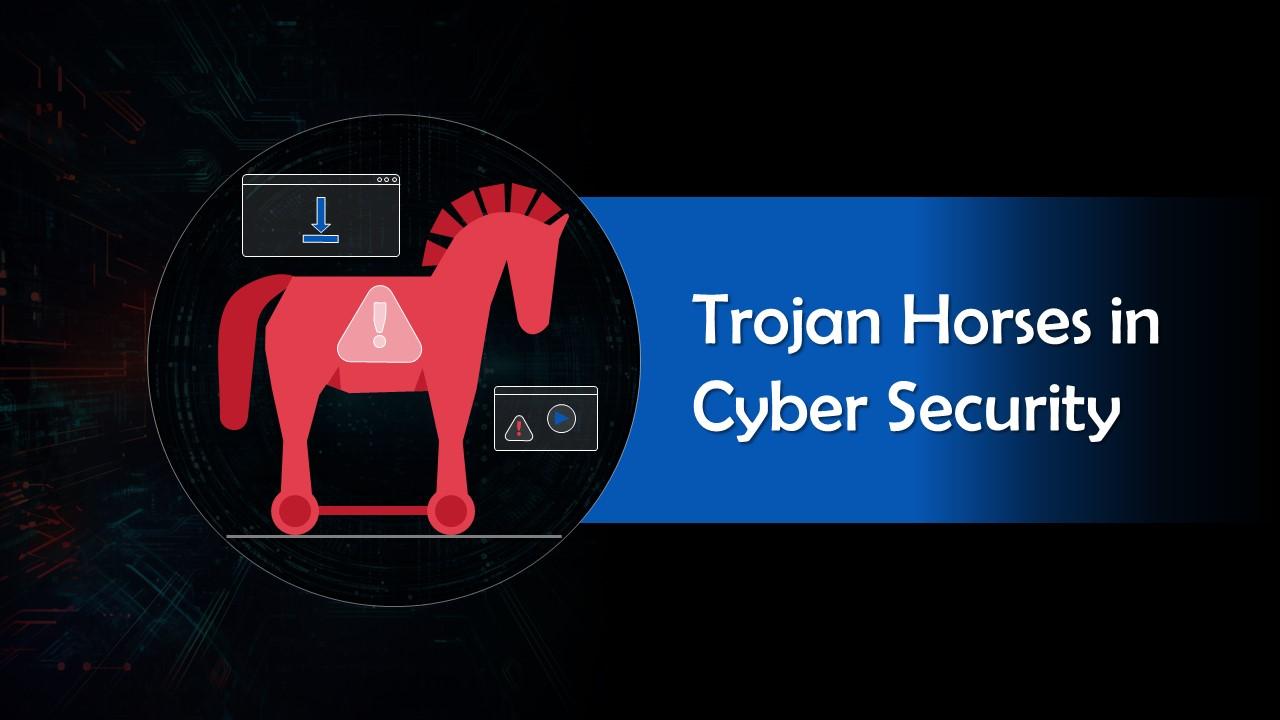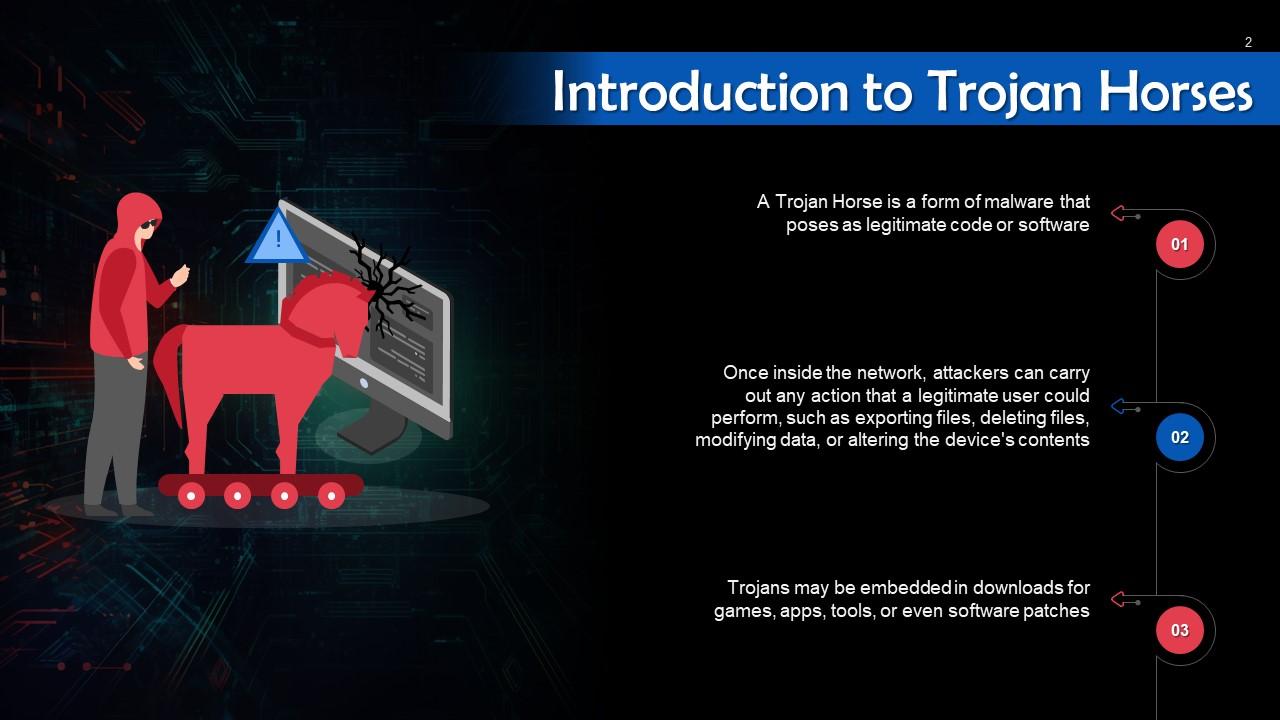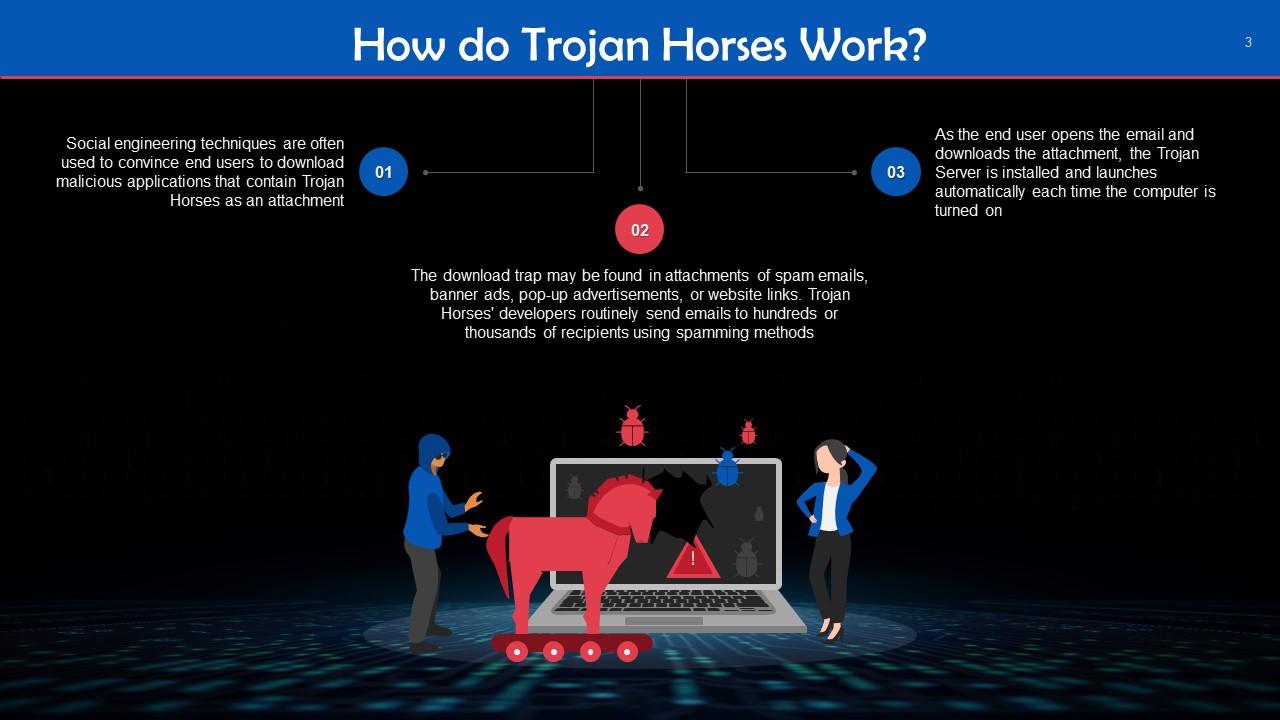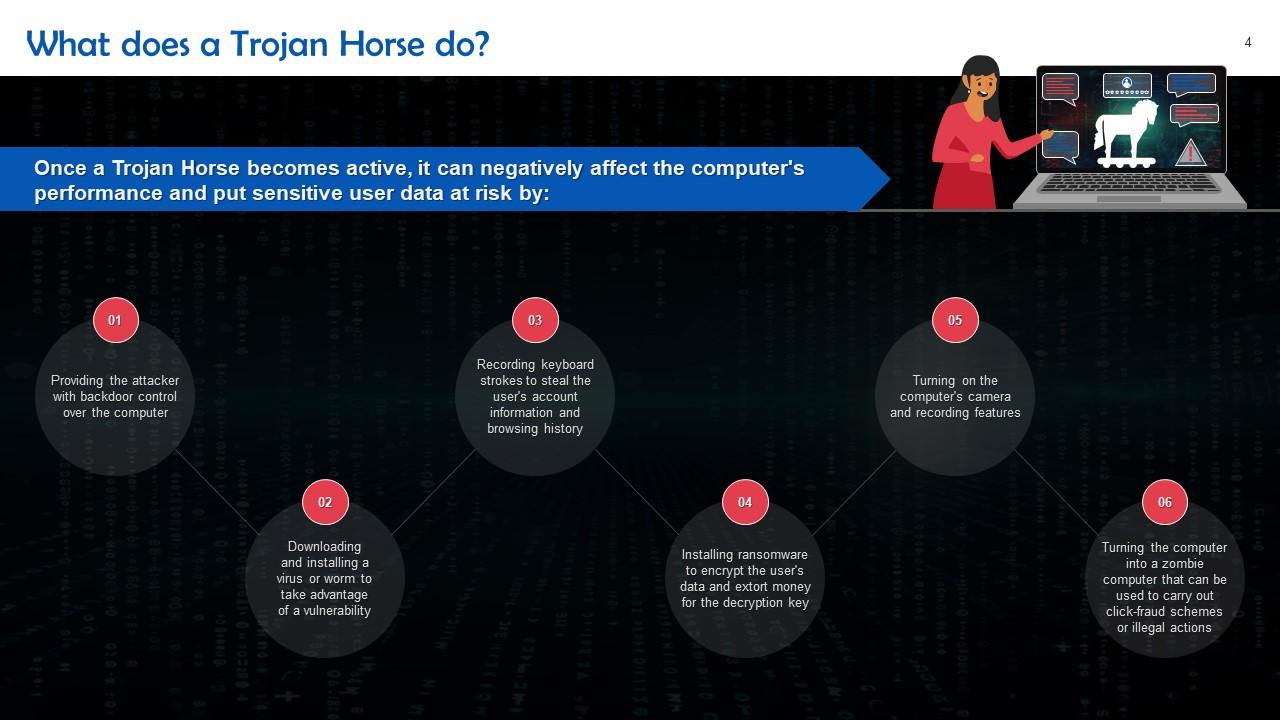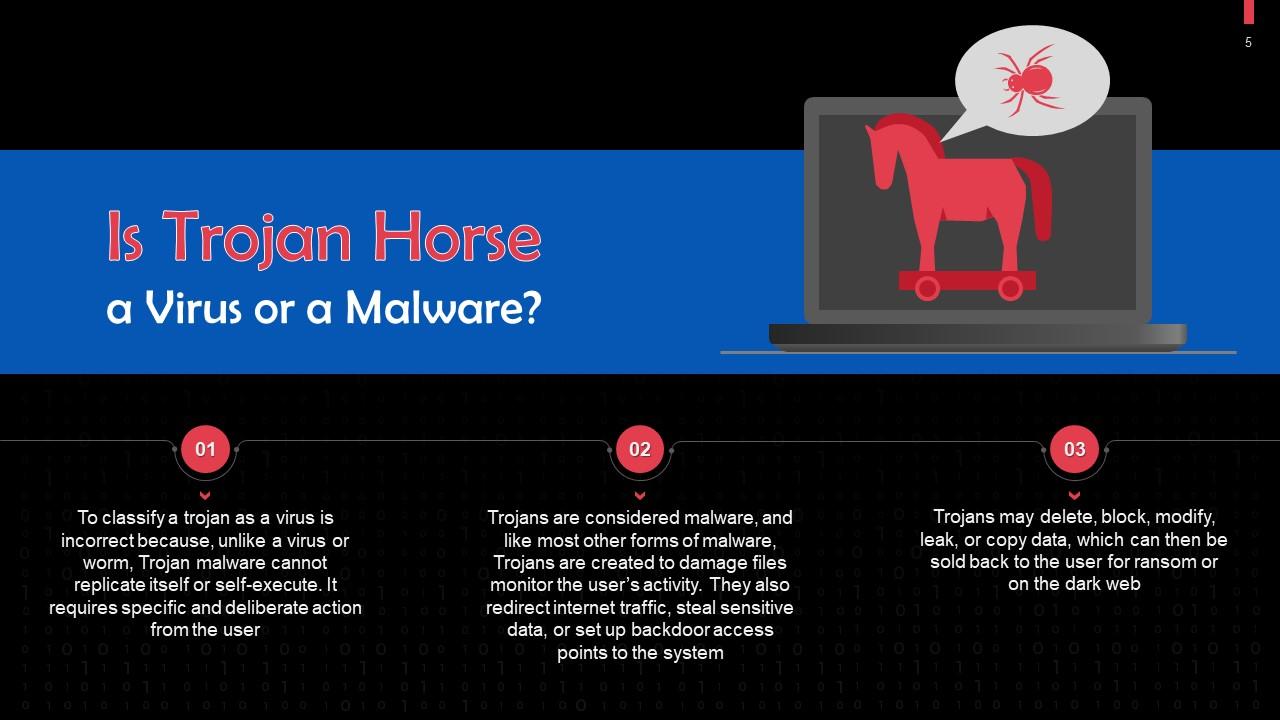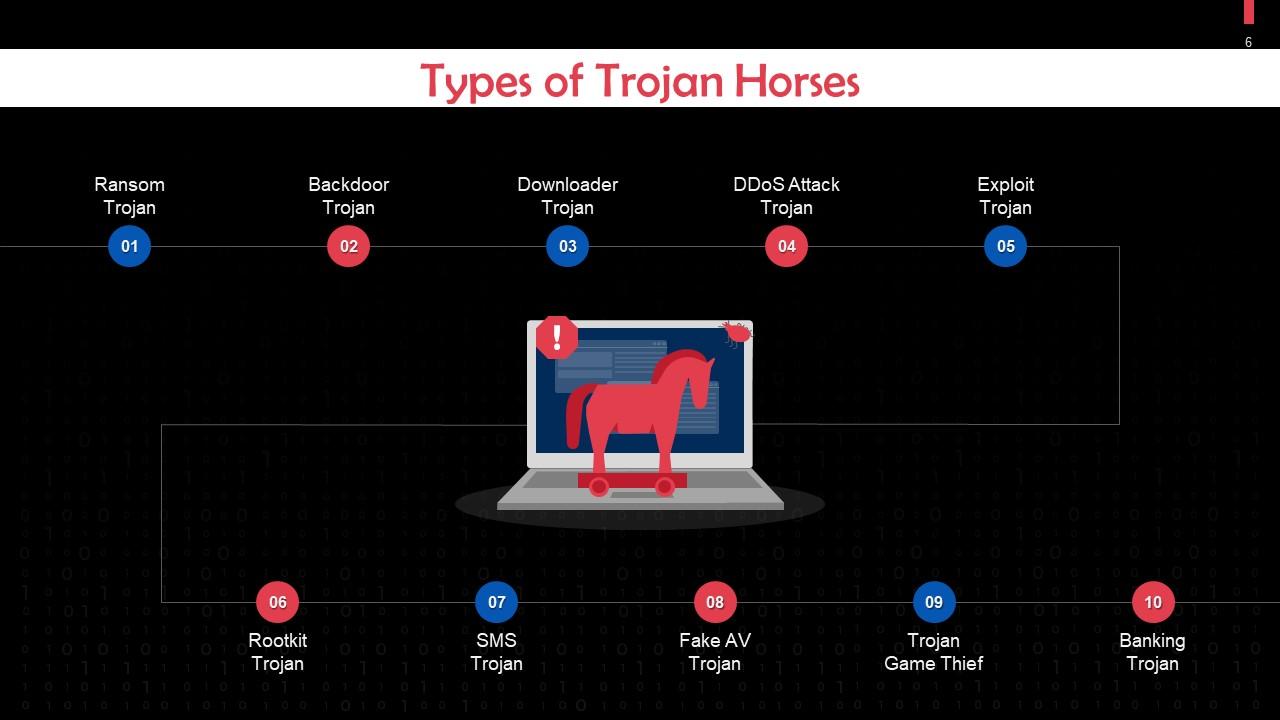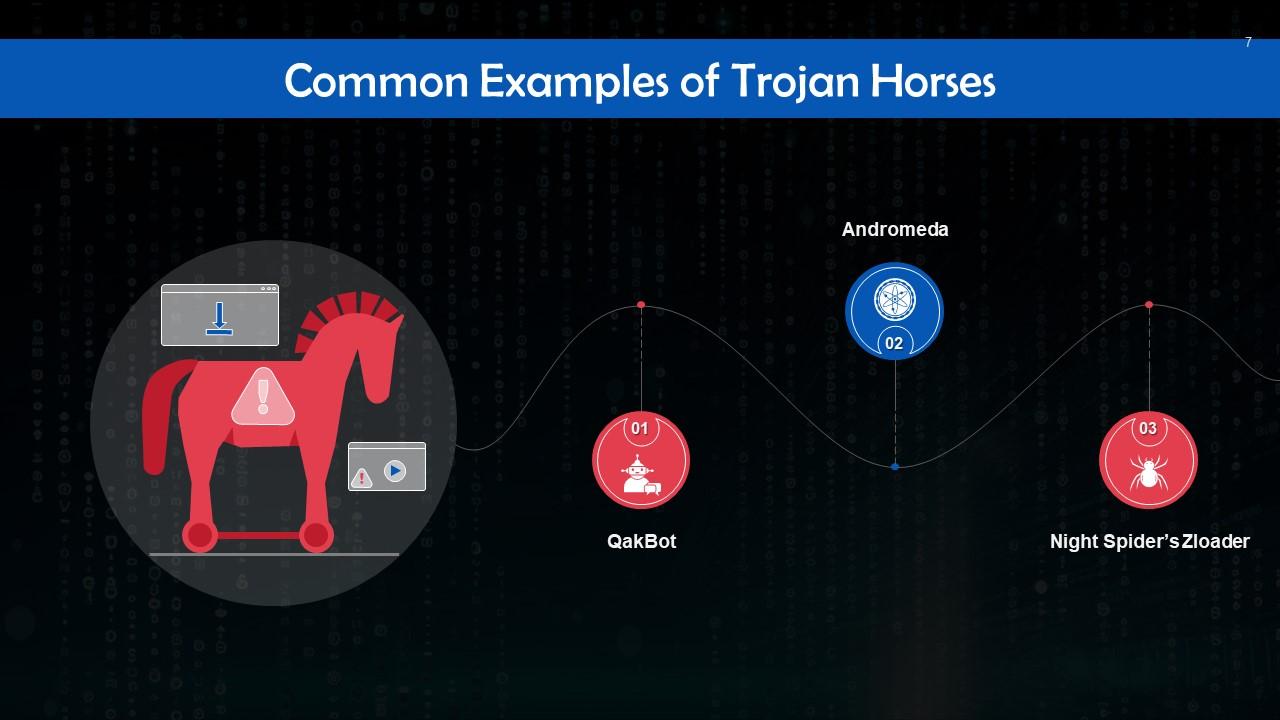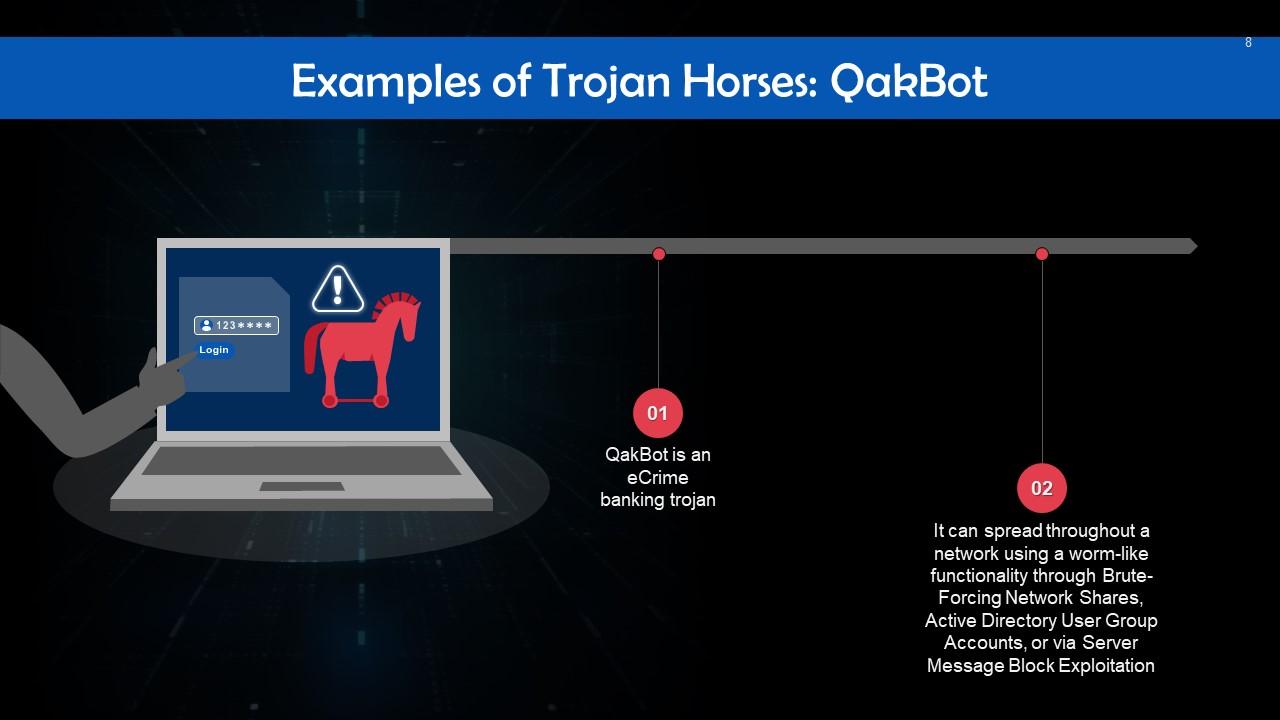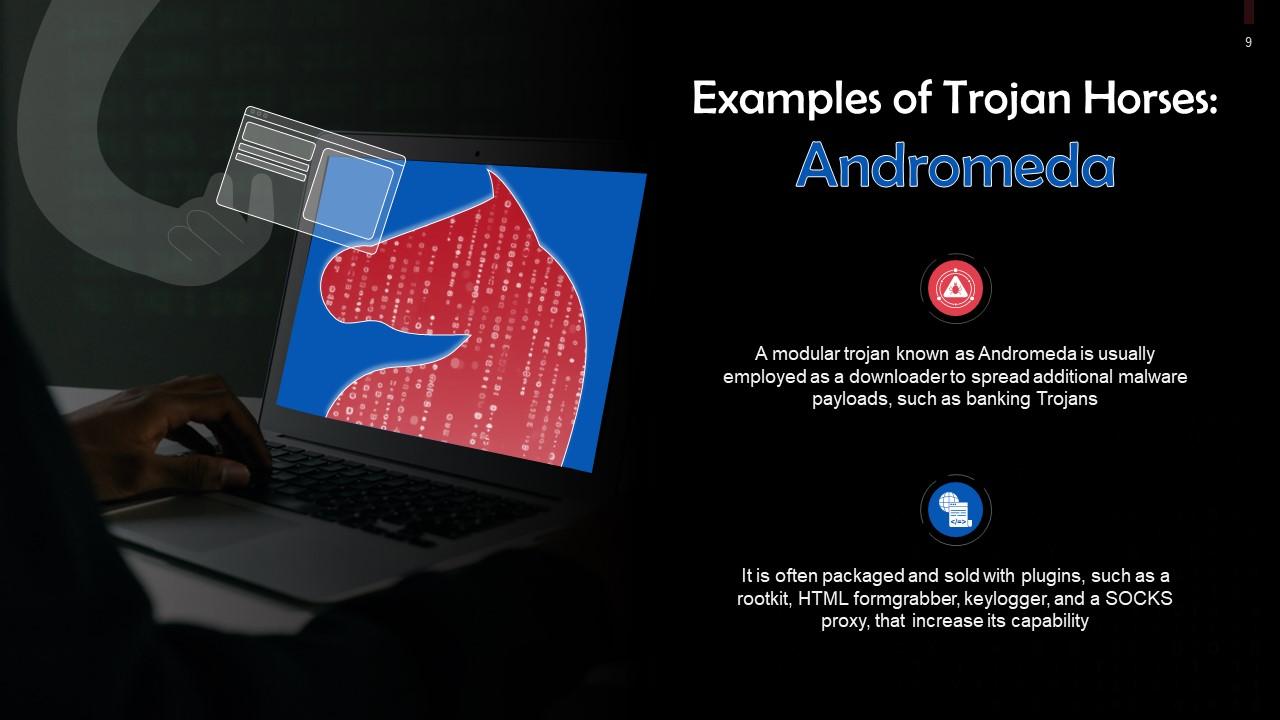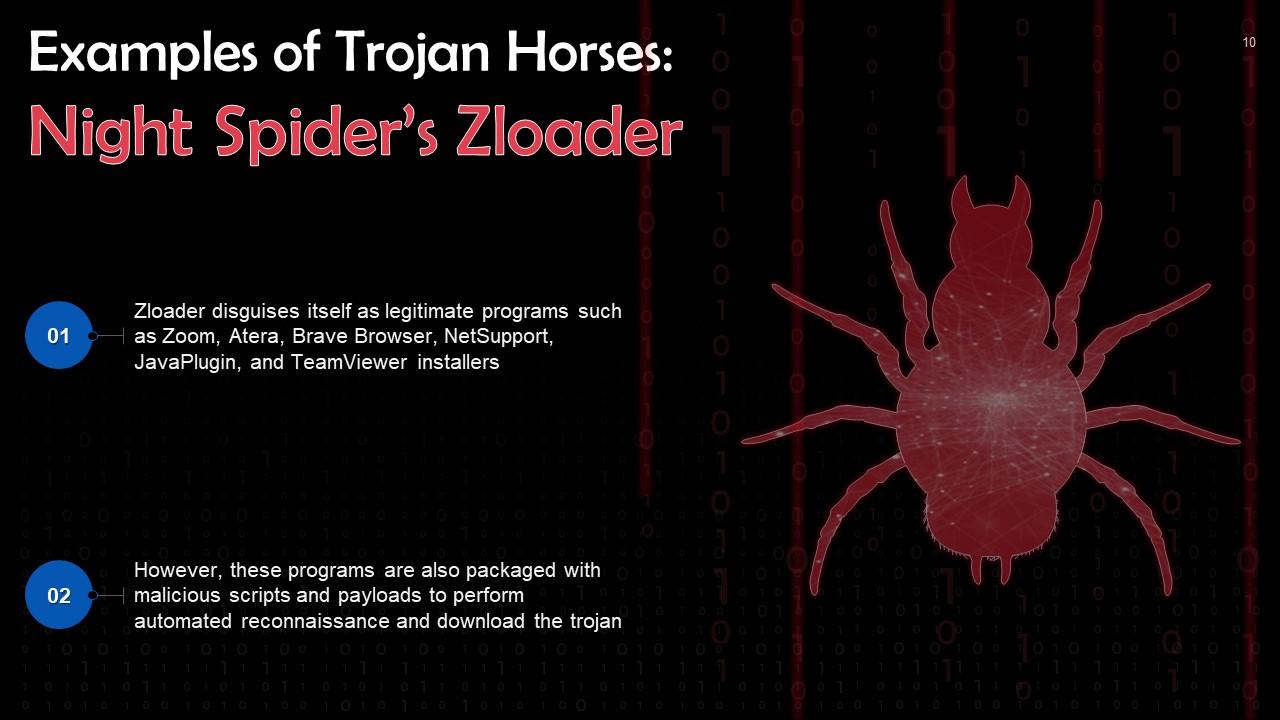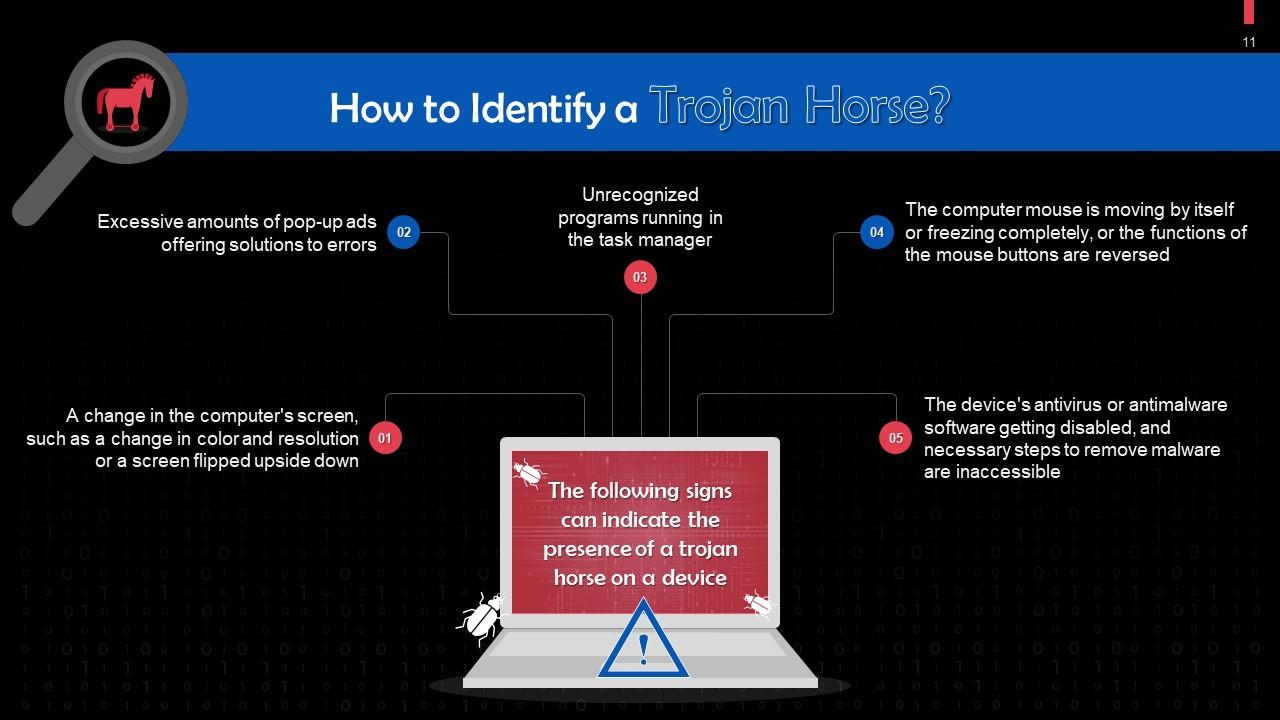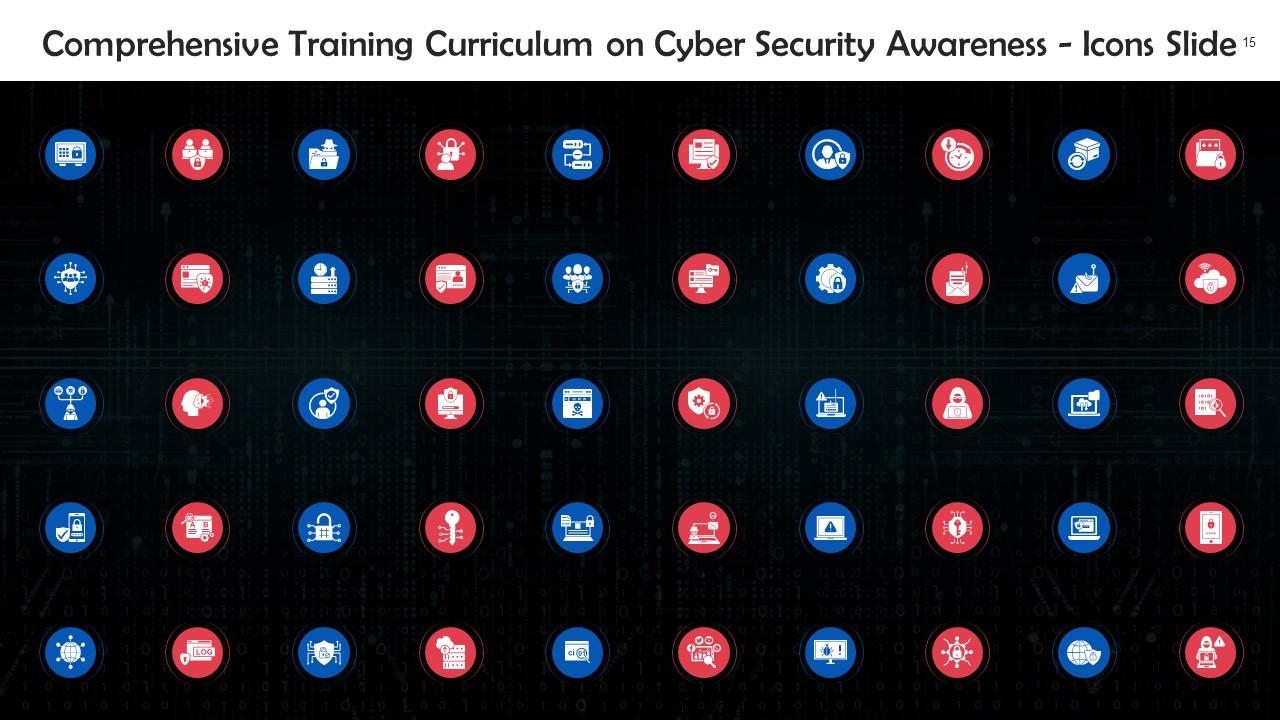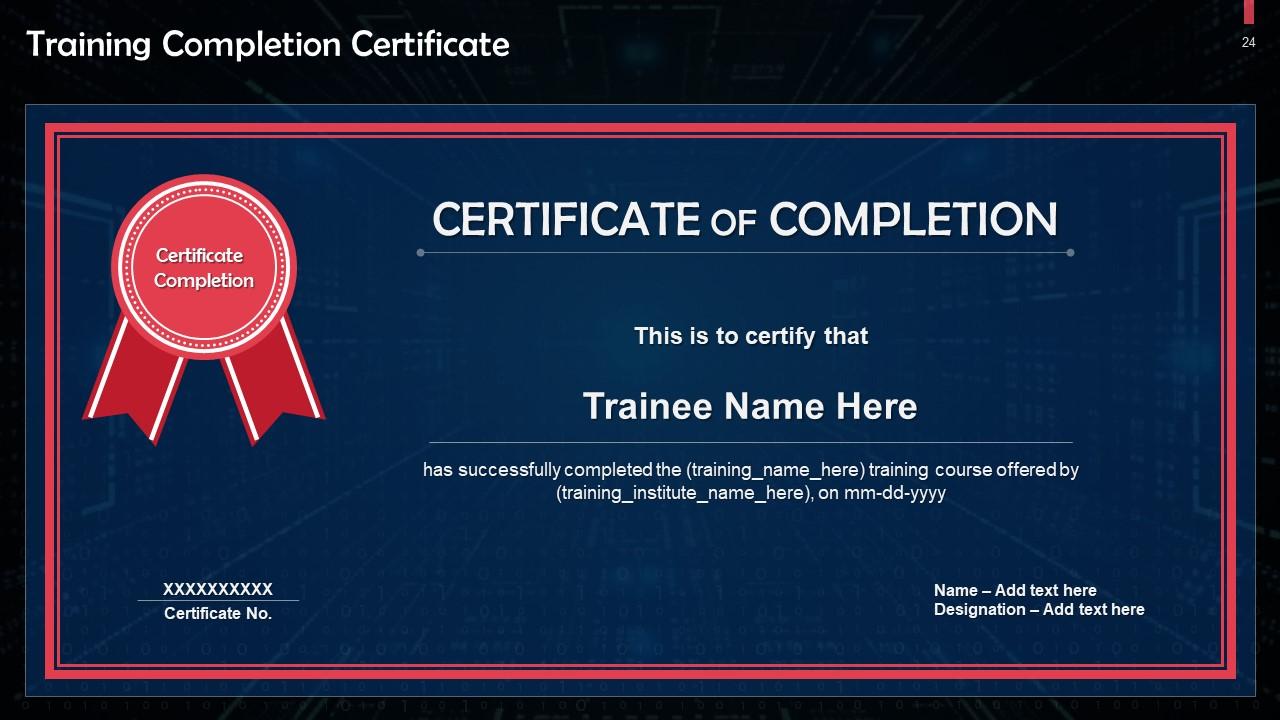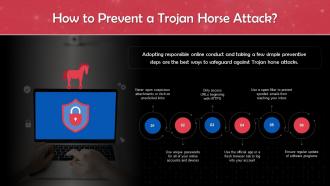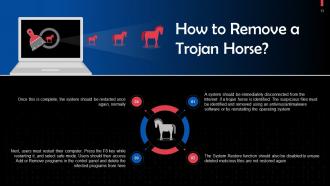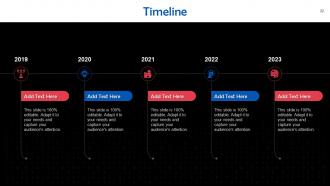Trojan Horses In Cyber Security Training Ppt
This set of PPT slides in detail covers the working, types, and prevention strategies to avoid trojan horses in cyber security.
This set of PPT slides in detail covers the working, types, and prevention strategies to avoid trojan horses in cyber secur..
- Google Slides is a new FREE Presentation software from Google.
- All our content is 100% compatible with Google Slides.
- Just download our designs, and upload them to Google Slides and they will work automatically.
- Amaze your audience with SlideTeam and Google Slides.
-
Want Changes to This PPT Slide? Check out our Presentation Design Services
- WideScreen Aspect ratio is becoming a very popular format. When you download this product, the downloaded ZIP will contain this product in both standard and widescreen format.
-

- Some older products that we have may only be in standard format, but they can easily be converted to widescreen.
- To do this, please open the SlideTeam product in Powerpoint, and go to
- Design ( On the top bar) -> Page Setup -> and select "On-screen Show (16:9)” in the drop down for "Slides Sized for".
- The slide or theme will change to widescreen, and all graphics will adjust automatically. You can similarly convert our content to any other desired screen aspect ratio.
Compatible With Google Slides

Get This In WideScreen
You must be logged in to download this presentation.
PowerPoint presentation slides
Presenting Trojan Horses in Cyber Security. Each slide is well crafted and designed by our PowerPoint experts. This PPT presentation is thoroughly researched by the experts, and every slide consists of appropriate content. All slides are customizable. You can add or delete the content as per your need. Not just this, you can also make the required changes in the charts and graphs. Download this professionally designed business presentation, add your content and present it with confidence.
People who downloaded this PowerPoint presentation also viewed the following :
Content of this Powerpoint Presentation
Slide 2
This slide gives an overview of Trojan Horses. A Trojan Horse is a form of malware that poses as legitimate code or software.
Slide 3
This slide discusses the working of Trojan Horses. Social engineering techniques are often used to convince end users to download malicious applications that contain Trojan Horses as an attachment.
Slide 4
This slide talks about how a trojan horse negatively affects a computer. Once a Trojan horse becomes active, it can negatively affect the computer's performance and put sensitive user data at risk.
Slide 5
This slide discusses whether trojan horse is a virus or a malware. To classify a trojan as a virus is incorrect because, unlike a virus or worm, Trojan malware cannot replicate itself or self-execute. It requires specific and deliberate action from the user.
Slide 6
This slide highlights types of trojan horses. These are: Ransom trojan, backdoor trojan, downloader trojan, DDoS trojan, exploit trojan, rootkit trojan, SMS trojan, fake AV trojan, trojan game thief, and banking trojan.
Instructor’s Notes:
- Ransom trojan: This Trojan malware demands ransom from users in exchange for the restoration of an infected device and its contents
- Backdoor trojan: The threat actor sets up access points to the network using this malware
- Downloader trojan: This type of trojan typically targets already compromised devices and installs a new version of malicious software on the device
- DDoS trojan: These can be deployed to multiple devices to create a botnet, or a zombie network, which can then be used to execute a DDoS attack
- Exploit trojan: As their name suggests, these Trojans identify and take advantage of vulnerabilities within software applications to gain access to the system
- Rootkit trojan: Rootkits operate close to or within the operating system's kernel, which gives them the capability to initiate commands to the computer. This trojan provides unauthorized access to threat actors. It is challenging to detect as it can conceal its presence on the infected device
- SMS trojan: This is a mobile device attack in which the Trojan malware can send and intercept text messages. It can also generate revenue by sending SMS messages to premium-rate numbers
- Fake AV trojan: Disguised as antivirus software, this trojan is ransomware that demands users to pay to detect or remove threats. The issues that the program claims to have found are usually fake
- Trojan game thief: This trojan targets online gamers and attempts to access their gaming account login information
- Banking trojan: This trojan targets financial accounts and is created to steal data related to bank accounts, credit or debit cards, or other online payment systems
Slide 7
This slide lists types of Trojan horses. These are: QakBot, Andromeda, and Night Spider’s Zloader.
Slide 8
This slide gives information about QakBot, which is a type of trojan horse. QakBot is an eCrime banking trojan which can spread throughout a network using a worm-like functionality.
Slide 9
This slide talks about Andromeda, which is a type of trojan horse. A modular trojan known as Andromeda is primarily employed as a downloader to spread additional malware payloads, such as banking Trojans
Slide 10
This slide gives information about Night Spider’s Zloader, which is a type of trojan horse. Zloader disguises itself as legitimate programs such as Zoom, Atera, Brave Browser, NetSupport, JavaPlugin, and TeamViewer installers.
Slide 11
This slide tells us how to identify trojan horses. The following signs can indicate the presence of a trojan horse on a device: A change in the computer's screen, excessive amounts of pop-up ads, etc.
Slide 12
This slide discusses how to protect against a trojan horse attack. Adopting responsible online conduct and taking a few simple preventive steps are the best ways to safeguard against Trojan horse attacks.
Slide 13
This slide gives information about the removal of a trojan horse. A system should be immediately disconnected from the Internet if a trojan horse is identified. Suspicious files must be identified and removed using an antivirus/antimalware software or by reinstalling the operating system.
Trojan Horses In Cyber Security Training Ppt with all 33 slides:
Use our Trojan Horses In Cyber Security Training Ppt to effectively help you save your valuable time. They are readymade to fit into any presentation structure.
-
The templates you provide are great! They have saved me tons of time and made my presentations come alive. Thank you for this awesome product. Keep up the good work!
-
Great product with effective design. Helped a lot in our corporate presentations. Easy to edit and stunning visuals.


